- Home
- Lawrence Block
Step by Step Page 25
Step by Step Read online
Page 25
WHEN I LEFT, Beth and Andy had also both packed it in after thirty-one laps and 62.25 miles. (There were a couple of cots in a rear section of the food tent, and Beth crawled onto one of them and passed out. After a couple of hours she woke up, went back onto the course, and circled it twice, edging me by a lap. If I’d known she was going to do that…well, never mind.)
I got a shower and a few hours’ sleep, returning to the park a few minutes after Jens hit the Centurion line at 7:15. That left him with plenty of time for another full lap, but he didn’t even want to walk the several hundred yards from the hundred-mile mark to the start/finish line. He’d set out to go a hundred miles, and he’d paced himself with that goal in mind, and he’d done it—and as far as he was concerned, that was that.
It was a glorious morning, cool and crisp and clear, and if they’d held the race a day later it would have been vastly different. It occurred to me that I had time for another lap myself. Ollie was out there, finishing a lap that would bring him to 76.3 miles. I could join him on the course, and join Beth at 66.26 miles.
I never seriously considered it. I was wearing jeans, but even if I changed to running shorts I wouldn’t be in any kind of shape to get back out there. My race was over.
WHEN I FLEW HOME the following day, I had an Ulli Kamm award in my suitcase. It was a handsome wooden plaque, eight inches by ten inches, with the effigy of a bear carved into it. (For Bear Creek Park, of course; that the bear is my totem animal is coincidental.) houston ultra weekend, the inscription reads. in recognition of walking 100 kilometers within 24 hours, the ulli kamm award is presented to—And then there’s a blank space, with two screws on either side of it to affix the brass nameplate, which I was to receive in the mail.
I’m still waiting for the nameplate, but that’s okay. It’s a fine trophy, and I don’t need my name on it to know whose it is. Nor am I in any danger of forgetting what I went through to earn it. I was happy to have it, proud to show it off to Lynne.
But it was never quite enough to offset my disappointment.
At Wakefield I’d gone 63.2 miles and felt an unprecedented glow of accomplishment. In Houston I’d gone a mile farther, and had slogged through puddles to do it, and I felt like a failure.
I could have done better, rain or no rain, toenails or no toenails. I could have stayed on the course, could have gone around a few more times. Three more laps would have taken me past seventy miles. Instead I’d lingered in the food tent long enough to make it truly painful when I tried to resume walking, and I’d embraced the pain as an excuse to give up.
The pain had been real enough, and so had the fatigue. But pain and exhaustion are inevitable in that long a race, and I knew it, and knew how to push on through them.
And didn’t.
20
THE SOUVENIR T-SHIRT FROM THE ATHENS MARATHON is one of my favorites. It’s long-sleeved, and the cut is good, and the color a good warm brown, but that’s the least of it. athens marathon, it says. 2006. And, within a classic laurel wreath, there’s the representation of a helmeted Greek warrior, running.
You’d never guess they meant Athens, Ohio.
THE RACE WAS held April 2, and I flew to Columbus the day before and drove to Athens. The field was small, with 135 finishers, and the course was beautiful—a flat asphalt path through the countryside, closed to bike traffic during the race. The finish line was in the Ohio University football stadium, and the final quarter-mile was a lap around the oval track.
My time of 5:41:08 was a good deal slower than Mobile or New Orleans, but I hadn’t expected to break any records that day. I went back to my hotel and ate pizza, and the next morning I put on my new shirt and went home happy.
I CONTINUED WALKING local Road Runners Club races while I worked out my schedule for marathons and ultras. Between Houston and Athens I raced twice, a 5K in Washington Heights and a return engagement in the Brooklyn Half Marathon. My time in Brooklyn was almost four minutes slower than it had been in 2005, and I found that surprising; with all the training and racing I’d done in the intervening twelve months, you’d think my time would have come down a little. But I chalked it up to lingering effects of the Houston Ultra.
After Athens, I had three more local races leading up to my next marathon, coming up the first weekend in June in Deadwood, South Dakota. The longest of the three was the Queens Half Marathon, and my time of 2:37:55 was seven and a half minutes slower than the previous year’s.
Hmmm.
LYNNE AND I made a real trip out of Deadwood, enjoying the town before the race, then spending the following week driving around the state. During the Buffalo hunt we’d taken Polaroid snapshots of each other, wearing Buffalo T-shirts and posing in front of pertinent signage, and now we took photography to another level by inaugurating a virtual photo collection. In front of some suitable attraction—our favorite was the World’s Largest Pheasant, in Huron, South Dakota—one of us would strike an appropriate pose, while the other would aim an invisible camera, frame the shot perfectly, and click an invisible shutter. The best part of this was the baffled reaction of onlookers, but the aftermath was almost as good; back home, we had no film to develop, no prints to frame, no digital images to bore our friends with.
The race itself was challenging. It was a point-to-point race on the Deadwood-Mickelson Trail, an old railroad right-of-way that had been converted for recreational purposes. (Rails to Trails, they call this sort of thing, and I’m all for it.) Buses took us to the start, where I stood in the Porta John line until I reached my goal, peed, and then, recognizing the inevitable, got right back into line again. I’d made the round-trip several times before it was time to get in line for the start.
If the Athens course had been an out-and-back, Deadwood was an up-and-down. We started out at around five thousand feet, had a straight shot uphill for the first fourteen miles, then went downhill all the way to the finish. Overall, there was a net loss of altitude of around a thousand feet.
The mile-high altitude and the relentless uphill march made the first half of the race demanding, and the first part of the downhill was steep enough to make it hard for a walker to keep from breaking stride. Early on in the downhill I bowed to the inevitable and tried switching to a jog, but that was so hard on my knees I gave it up after fifteen or twenty yards.
I knew my time wasn’t going to be anything special, and I didn’t really care. I was enjoying the vistas, and I cruised to the finish, getting there with a net time of 6:08:08. Nothing to brag about but nothing to be ashamed of, and I now owned a shirt with Calamity Jane and Wild Bill Hickok on it. And I’d added South Dakota to my marathon list.
21
THERE WERE PLENTY OF RACES IN AND AROUND NEW YORK during June and July, but I passed them up. I eased back into training after we’d returned from Deadwood, and upped my mileage along the Hudson, hoping for a good performance at Wakefield. The Houston race, my disappointment notwithstanding, had carried me from 63.2 to 64.25 miles, and I felt I ought to be able to manage at least one more lap than I’d walked a year ago.
And was it only a year since I’d been unable to dream past fifty miles? Now I was dreaming of eighty. It didn’t seem out of the question. I’d have reached eighty in Houston, if the puddles hadn’t gotten in my way. I’d have still gone well over seventy, rain or no rain, if my own will hadn’t failed. The Wakefield course was less user-friendly, with its little patch of cross-country downhill and its long stretches of concrete, but it wasn’t all that bad, and it had the virtue of familiarity.
We rented a car on Thursday, drove up, checked into the Lord Wakefield. This time we took along a folding chair for Lynne and a card table for all the supplies I hadn’t thought to bring the first time. (The one thing I forgot was a table knife. The food tent at Houston, besides providing me with an all-too-comfortable place to dawdle, had shown me what a food tent ought to be, and how short Wakefield fell in that department. Aside from a lot of sugary crap, the best thing on offer was peanut butte
r. You had to make your own sandwiches, and you couldn’t, because all they gave you to dig the peanut butter out of the big jar was a dinky little white plastic knife. It barely reached far enough into the jar to get to the peanut butter, and bent and sometimes broke in the process. You couldn’t even hijack a plane with a knife like that, let alone make a sandwich. I had promised myself I’d pick up a couple of thrift-shop knives and donate them, but it slipped my mind.)
THE POET RANDALL JARRELL famously defined the novel as a long work of prose fiction with something wrong with it. Well, a twenty-four-hour race is a long run—or walk—in which something goes wrong. And in this case, as in Houston, it was the weather.
It was warm and humid on Thursday. That seems to be the default setting for Wakefield that time of year. It was no different Friday morning, but the forecast advised that a thunderstorm was on its way, and as the day wore on the sky darkened and the winds picked up. And you could smell the rain that was coming. A Dust Bowl farmer on the parched central plains would have fallen to his knees and given thanks to God. I did not.
It began raining lightly around the time I picked up my number at the sign-in tent. Now there’s nothing wrong with a light rain, and in midsummer it’s often more help than hindrance. I had a hooded Gore-Tex windbreaker along; it had served me well in Texas, although it couldn’t do anything for my feet, and I wasn’t worried about a light rain. But a light rain wasn’t what we got. We got a downpour, and by the time we should have been massing at the starting line, we were instead diverted to a meeting room in the adjacent motel. It wasn’t just a storm, it was a full-blown electrical cloud burst, and they didn’t dare send us out onto the course until it had passed through.
The start was postponed a half-hour to 7:30; at 7:15 they announced a further postponement, to 8:00. Any delay beyond that hour would cut into the time of the race, because they were required to close down by eight Saturday night. So if we got under way at nine, say, we’d be starting a twenty-three-hour race. That sounds as though it ought to be long enough for anybody, but it’s not, and we were not a happy bunch.
Beth was there—her home was a half hour’s drive from Wakefield—and so was Andy. It was good to see them again, and good to recognize faces I’d seen the year before; it was nice to have my own face recognized by the people who were putting on the race. Or trying to, if the storm would only move on through.
Lynne heard two young runners griping about the delay. “Like I’m gonna get struck by lightning,” he said. “I mean, what are the odds?”
THE STORM, as it turned out, was no problem. It passed overhead just in time for the race to begin at eight o’clock. A light rain continued to fall for the first hour or so, but it really wasn’t anything to complain about. It cooled things off after a hot day, and spared us the swarming gnats I’d had so much fun aspirating the previous year.
Remember the spiritual?
God gave Noah that rainbow sign…
Won’t be water—be fire next time.
Houston was water. Wakefield was heat.
FOR THE FIRST ten hours or so, the race was as idyllic as something that effortful can be. There were no large puddles to step in, and the course was virtually dry except for the fifty-yard cross-country downhill plunge near the start. That was pretty soggy, but there wasn’t that much of it and it wasn’t that hard to skirt the watery spots. That stretch was going to be a minor nuisance anyway, and the rain hadn’t made it that much worse.
I walked side by side with Andy Cable for most of the first six hours. Because Wakefield wasn’t a judged race, and didn’t have a walkers category, he felt free to mix in a sort of shuffling jog (or a jogging shuffle, as you prefer) on the downhill stretches. He’d pull away from me at such times; then he’d deliberately slow down when the course leveled off, and I’d catch up with him on the uphill. And so on. Between shuffles, we talked—and the laps mounted up, and the miles accumulated, and the hours passed.
For four hours or so, Lynne sat at our table and rose to greet me at the completion of each 3.1-mile lap. Then around midnight she pleaded exhaustion and went to our room. That would have been fine, except a lap later I discovered she’d never retrieved the two big bottles of Coca-Cola from the trunk of the car, and had taken the car keys to the room with her. I drank some water and got under way, concentrating on thinking instead of all of the woman’s good qualities.
On the ninth or tenth lap, I remember remarking to Andy that I knew I was starting to tire when the Gatorade began tasting good. He told me I didn’t look tired, and I said it didn’t taste good yet. “But it’s not as bad as it was a few laps back,” I admitted.
AS FAR AS I know, Wakefield’s the only twenty-four-hour race that starts in the evening. The rest, like most marathons and ultras, get under way in the morning. The starting time’s a plus for Wakefield’s marathon contingent; the summer heat is a lot easier to bear when the sun goes down, and the marathoners can wrap up their race, gobble their pizza, and still make it home at a decent hour.
But is an evening start good or bad for the twenty-four-hour participants? That’s hard to say. One very obvious disadvantage is that, barring a prerace afternoon nap, the entrants have already been awake for twelve hours or so by the time the race gets started. When their usual bedtime hour rolls around, they’ve still got three-fourths of the race in front of them.
On the other hand, one is psychologically disposed to be most tired during the hours of darkness. With an evening start, ten hours on the course will carry you through to dawn, and the rest of the race will be in daylight, when you’re programmed to be awake. In contrast, consider my own experience in Houston; after eighteen punishing hours on the course, it was two in the morning, and everything in me yearned to be in bed. Would I have been better able to shrug off the fatigue if it had been 2:00 p.m. instead of 2:00 a.m.?
Maybe. Or maybe not. Because ultimately one returns to that definition of the race derived from Randall Jarrell. What was it again? Oh, right—a long walk in which something goes wrong.
When dawn broke, I could see what it was going to be this time.
WHEN I FIRST LEARNED of the existence of twenty-four-hour races, I remember being struck by the delight to the spirits I was sure would occur when darkness gave way to dawn. One would be quite literally running to daylight, and wouldn’t that give you a wonderful feeling?
Well, no, not really. A sunrise, like a sunset, is a phenomenon I don’t tire of viewing. And, because I ordinarily see fewer of the former, they’re that much more special. I mentioned one in Spain that I still recall—Lynne and I, reaching the top of a hill, and turning around just in time to see the sun break the horizon. I’ve witnessed others on cruise ships, and they’ve never failed to give me a lift.
But during a race dawn is a very gradual thing, a glow in the distant sky, then an incremental lightening, as if someone’s got a very slow hand on a celestial rheostat. I can’t recall seeing the sun come into view. There’s just a moment, after the sky’s been light for a while, when it’s suddenly up there, a few degrees off the horizon. One may or may not be pleased to see it, but it’s not likely to rank high on one’s life list of peak experiences.
My first time at Wakefield, the first lightening of the sky took place while I was in my room with my eyes closed. By the time I returned to the course, dawn was already upon us. This time I didn’t take a break during the hours of darkness, and I was out there for the return of daylight.
And I looked up, and saw not a cloud in the sky.
It was, no question, an absolutely beautiful morning. It’s a few minutes past seven on a similarly beautiful morning as I write these lines, with the sun up and no more than two or three tiny clouds to be seen against the blue of the sky, but the present morning is in late February, and at this time of year the sun is unequivocally one of the good guys.
Not so in Wakefield in July. Not so when one’s faced with the prospect of spending the whole day under it.
THE TEM
PERATURE had been just fine all through the night. The rain had cooled things down, and it was a shame it hadn’t been able to do anything about the humidity. By dawn I was coated with a layer of salty perspiration residue, and the lack of cloud cover suggested it was all going to get a lot worse.
By six you could feel the sun, and by seven it was already strong. An hour later I’d been on the course for twelve hours, and I wasn’t far off Centurion pace. That didn’t mean I had a shot at a hundred miles, but it meant that eighty was well within reach, and eighty-five or even ninety wasn’t entirely out of the question.
If only they could do something about the sun. Hang a cloud or two in front of it, say.
Around nine I left the course for the first time. I wanted a few minutes out of the heat, and I was even more anxious to get under the shower and wash the caked sweat from my skin. After my shower, and after I’d put on clean socks and pinned my race number to a clean pair of shorts, I went out again. I had a cup of coffee and something to eat and got back on the course.
I needed another break around noon. I went to the room and stretched out on the bed. I can’t recall if I slept, or how long the break lasted, but eventually I was out on the course again.
It just kept getting hotter and hotter. That weekend was the summer’s hottest, with temperatures throughout the area reaching ninety-five degrees. That’s in the shade, and shade was in short supply on that course. For the remainder of the race, I had to take a break after every three-mile lap, just to get out of the sun. That meant ducking into the food tent and drinking water for five to ten minutes, then walking around in the sun for the forty-five minutes it took to circle the course, then retreating once again to the shelter of the tent.

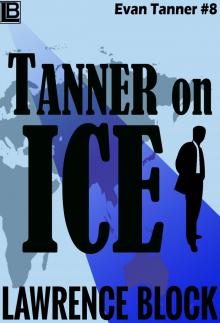 Tanner on Ice
Tanner on Ice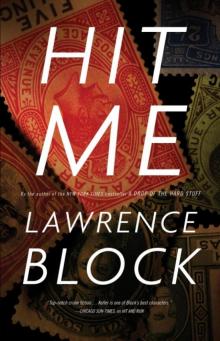 Hit Me
Hit Me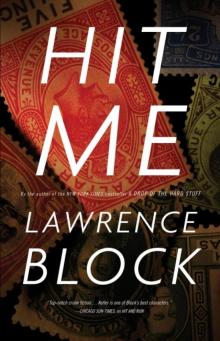 Hit and Run
Hit and Run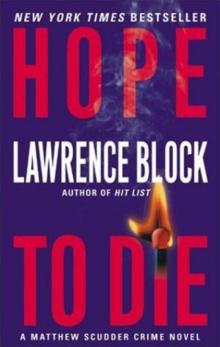 Hope to Die
Hope to Die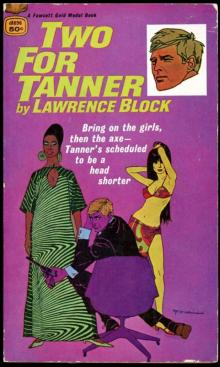 Two For Tanner
Two For Tanner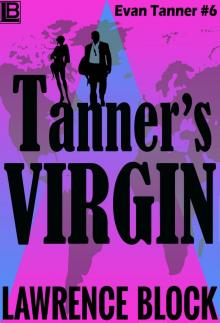 Tanners Virgin
Tanners Virgin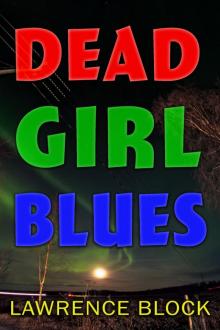 Dead Girl Blues
Dead Girl Blues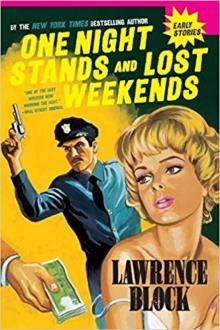 One Night Stands and Lost Weekends
One Night Stands and Lost Weekends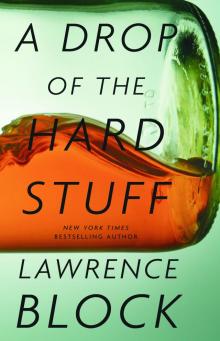 A Drop of the Hard Stuff
A Drop of the Hard Stuff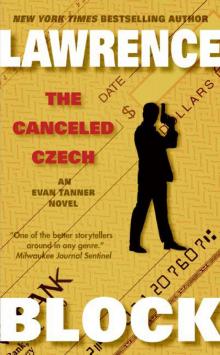 The Canceled Czech
The Canceled Czech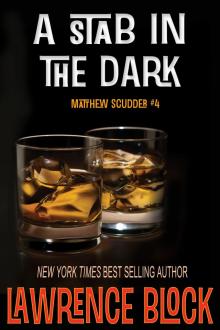 Even the Wicked
Even the Wicked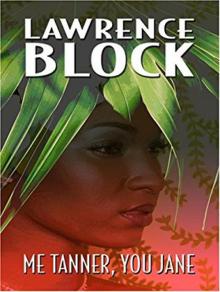 Me Tanner, You Jane
Me Tanner, You Jane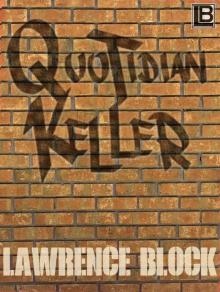 Quotidian Keller
Quotidian Keller Small Town
Small Town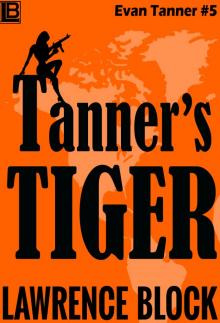 Tanners Tiger
Tanners Tiger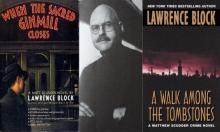 A Walk Among the Tombstones
A Walk Among the Tombstones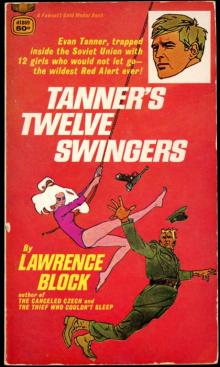 Tanners Twelve Swingers
Tanners Twelve Swingers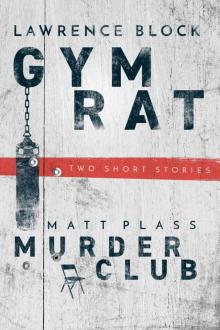 Gym Rat & the Murder Club
Gym Rat & the Murder Club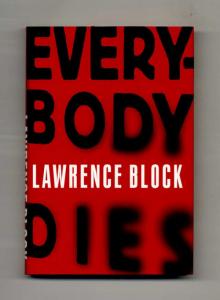 Everybody Dies
Everybody Dies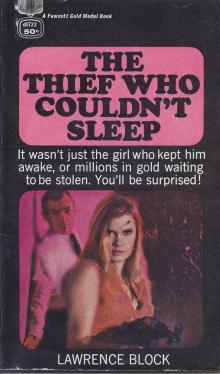 The Thief Who Couldnt Sleep
The Thief Who Couldnt Sleep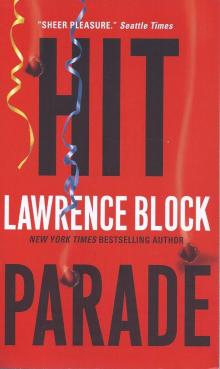 Hit Parade
Hit Parade The Devil Knows Youre Dead
The Devil Knows Youre Dead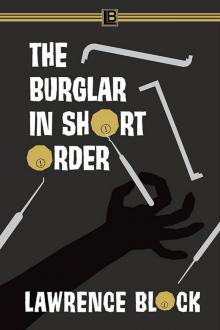 The Burglar in Short Order
The Burglar in Short Order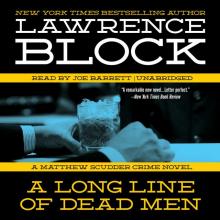 A Long Line of Dead Men
A Long Line of Dead Men Keller's Homecoming
Keller's Homecoming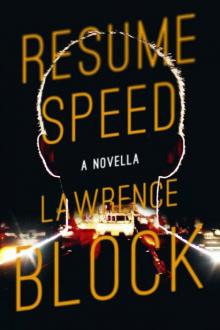 Resume Speed
Resume Speed Keller's Adjustment
Keller's Adjustment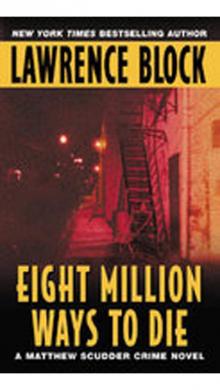 Eight Million Ways to Die
Eight Million Ways to Die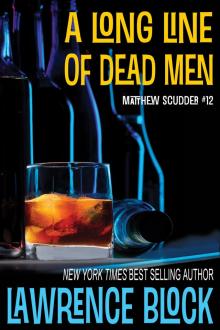 Time to Murder and Create
Time to Murder and Create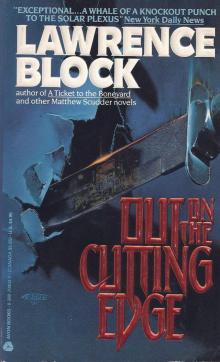 Out on the Cutting Edge
Out on the Cutting Edge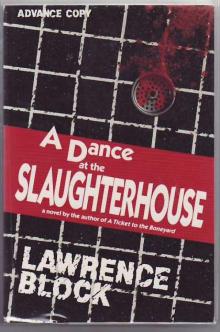 A Dance at the Slaughter House
A Dance at the Slaughter House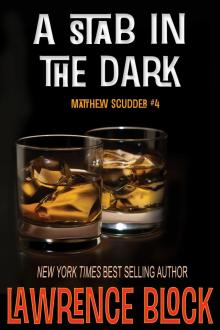 In the Midst of Death
In the Midst of Death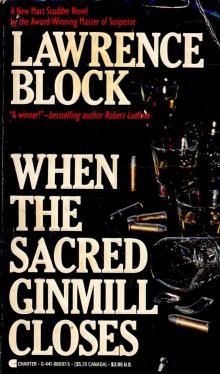 When the Sacred Ginmill Closes
When the Sacred Ginmill Closes You Could Call It Murder
You Could Call It Murder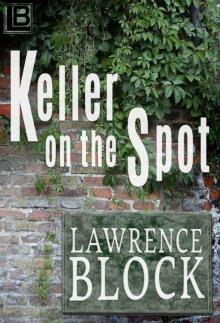 Keller on the Spot
Keller on the Spot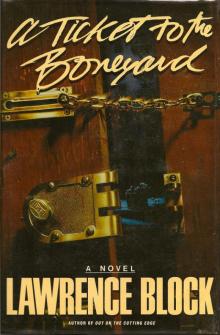 A Ticket to the Boneyard
A Ticket to the Boneyard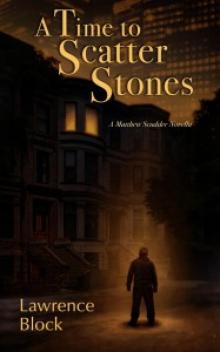 A Time to Scatter Stones
A Time to Scatter Stones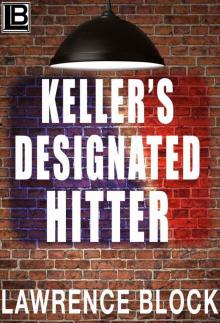 Keller's Designated Hitter
Keller's Designated Hitter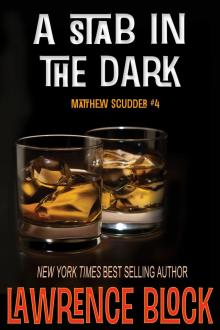 A Stab in the Dark
A Stab in the Dark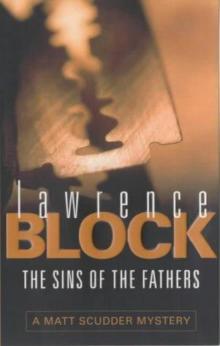 Sins of the Fathers
Sins of the Fathers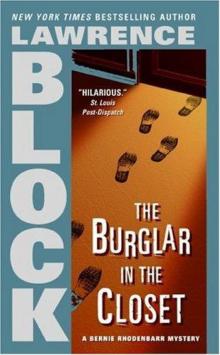 The Burglar in the Closet
The Burglar in the Closet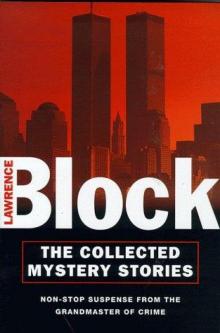 Burglar Who Dropped In On Elvis
Burglar Who Dropped In On Elvis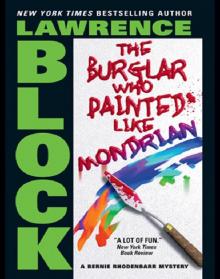 The Burglar Who Painted Like Mondrian
The Burglar Who Painted Like Mondrian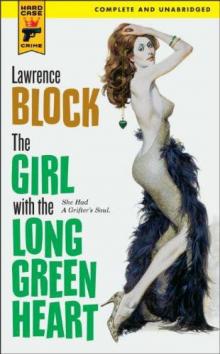 The Girl With the Long Green Heart
The Girl With the Long Green Heart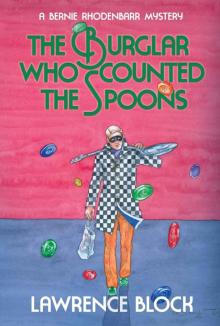 The Burglar Who Counted the Spoons (Bernie Rhodenbarr)
The Burglar Who Counted the Spoons (Bernie Rhodenbarr)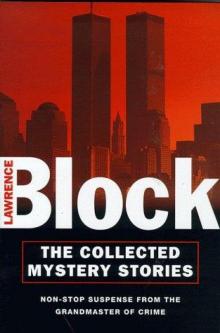 Burglar Who Smelled Smoke
Burglar Who Smelled Smoke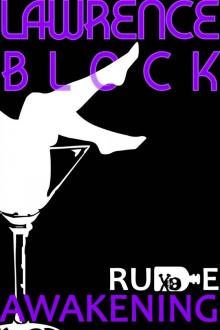 Rude Awakening (Kit Tolliver #2) (The Kit Tolliver Stories)
Rude Awakening (Kit Tolliver #2) (The Kit Tolliver Stories)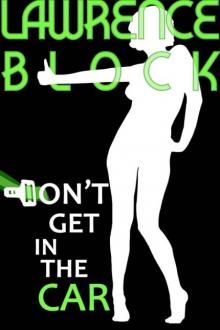 Don't Get in the Car (Kit Tolliver #9) (The Kit Tolliver Stories)
Don't Get in the Car (Kit Tolliver #9) (The Kit Tolliver Stories) CH04 - The Topless Tulip Caper
CH04 - The Topless Tulip Caper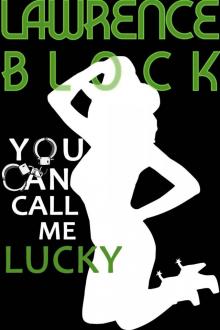 You Can Call Me Lucky (Kit Tolliver #3) (The Kit Tolliver Stories)
You Can Call Me Lucky (Kit Tolliver #3) (The Kit Tolliver Stories) CH02 - Chip Harrison Scores Again
CH02 - Chip Harrison Scores Again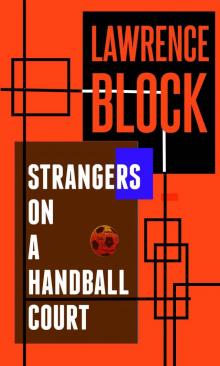 Strangers on a Handball Court
Strangers on a Handball Court Cleveland in My Dreams
Cleveland in My Dreams Clean Slate (Kit Tolliver #4) (The Kit Tolliver Stories)
Clean Slate (Kit Tolliver #4) (The Kit Tolliver Stories) The Burglar Who Traded Ted Williams
The Burglar Who Traded Ted Williams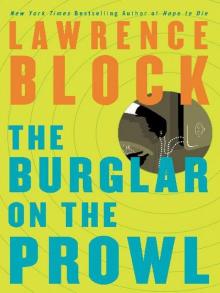 Burglar on the Prowl
Burglar on the Prowl In For a Penny (A Story From the Dark Side)
In For a Penny (A Story From the Dark Side)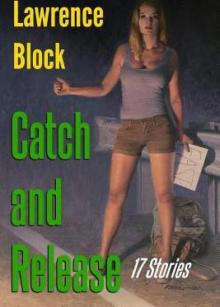 Catch and Release Paperback
Catch and Release Paperback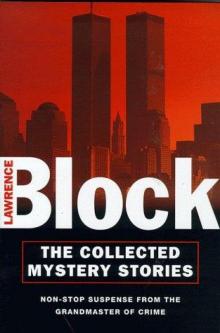 Ride A White Horse
Ride A White Horse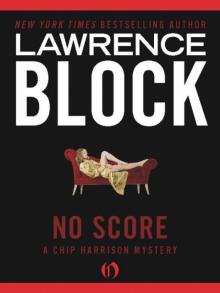 No Score
No Score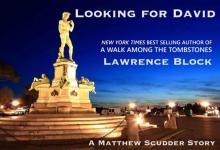 Looking for David (A Matthew Scudder Story Book 7)
Looking for David (A Matthew Scudder Story Book 7)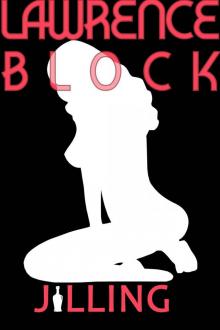 Jilling (Kit Tolliver #6) (The Kit Tolliver Stories)
Jilling (Kit Tolliver #6) (The Kit Tolliver Stories)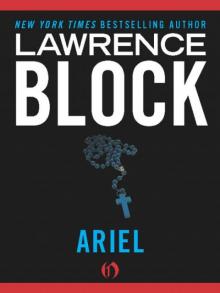 Ariel
Ariel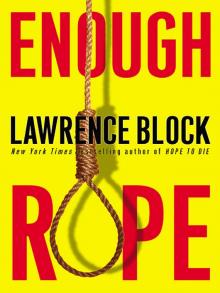 Enough Rope
Enough Rope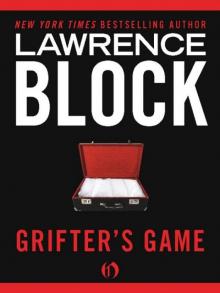 Grifter's Game
Grifter's Game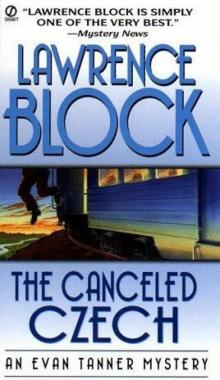 Canceled Czech
Canceled Czech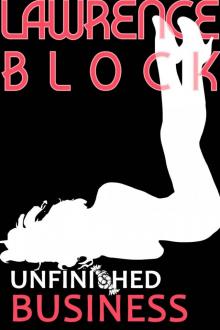 Unfinished Business (Kit Tolliver #12) (The Kit Tolliver Stories)
Unfinished Business (Kit Tolliver #12) (The Kit Tolliver Stories)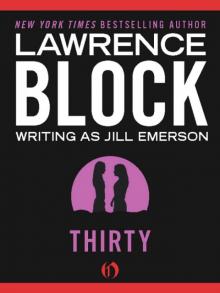 Thirty
Thirty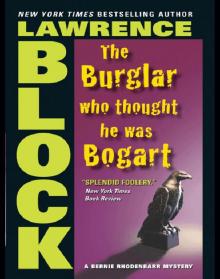 The Burglar Who Thought He Was Bogart
The Burglar Who Thought He Was Bogart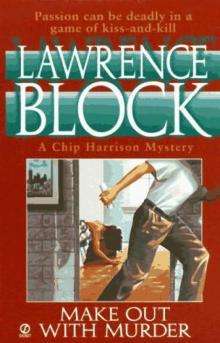 Make Out with Murder
Make Out with Murder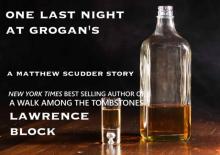 One Last Night at Grogan's (A Matthew Scudder Story Book 11)
One Last Night at Grogan's (A Matthew Scudder Story Book 11)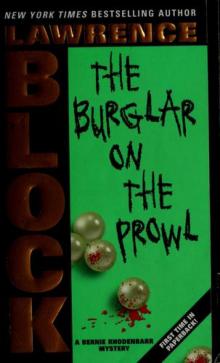 The Burglar on the Prowl
The Burglar on the Prowl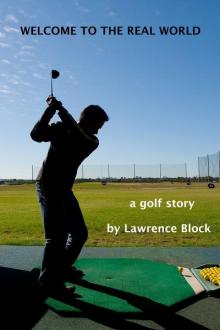 Welcome to the Real World (A Story From the Dark Side)
Welcome to the Real World (A Story From the Dark Side)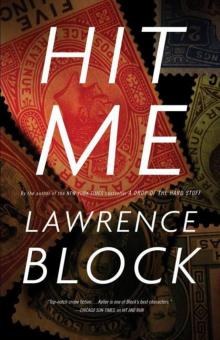 Keller 05 - Hit Me
Keller 05 - Hit Me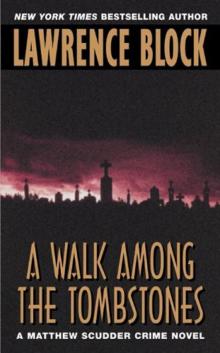 Walk Among the Tombstones: A Matthew Scudder Crime Novel
Walk Among the Tombstones: A Matthew Scudder Crime Novel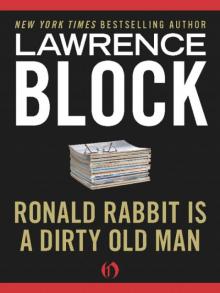 Ronald Rabbit Is a Dirty Old Man
Ronald Rabbit Is a Dirty Old Man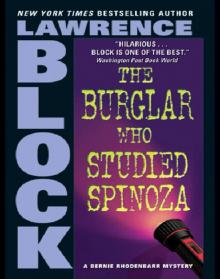 The Burglar Who Studied Spinoza
The Burglar Who Studied Spinoza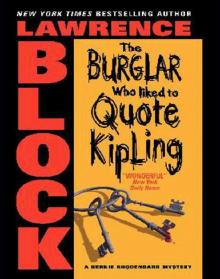 The Burglar Who Liked to Quote Kipling
The Burglar Who Liked to Quote Kipling Keller in Des Moines
Keller in Des Moines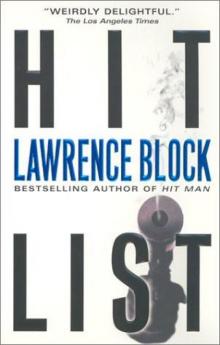 Hit List
Hit List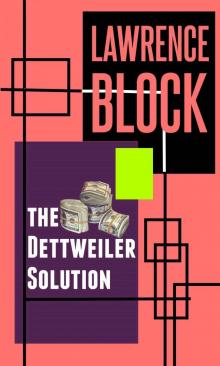 The Dettweiler Solution
The Dettweiler Solution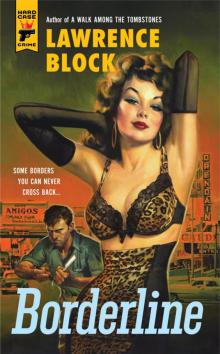 HCC 115 - Borderline
HCC 115 - Borderline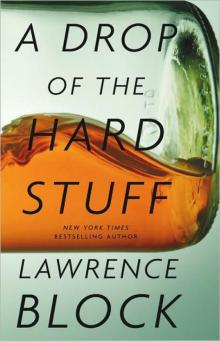 A Drop of the Hard Stuff: A Matthew Scudder Novel
A Drop of the Hard Stuff: A Matthew Scudder Novel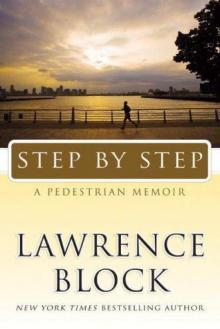 Step by Step
Step by Step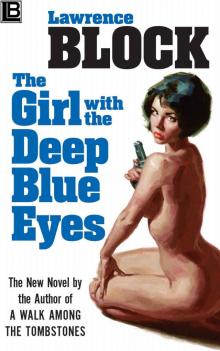 The Girl With the Deep Blue Eyes
The Girl With the Deep Blue Eyes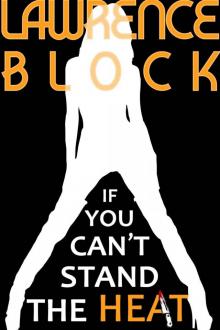 If You Can't Stand the Heat (Kit Tolliver #1) (The Kit Tolliver Stories)
If You Can't Stand the Heat (Kit Tolliver #1) (The Kit Tolliver Stories)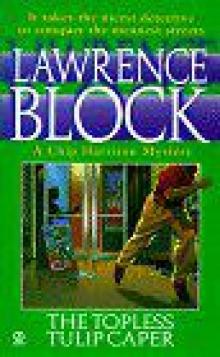 The Topless Tulip Caper
The Topless Tulip Caper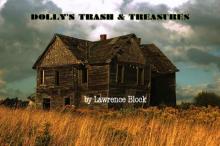 Dolly's Trash & Treasures (A Story From the Dark Side)
Dolly's Trash & Treasures (A Story From the Dark Side)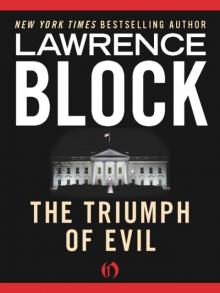 The Triumph of Evil
The Triumph of Evil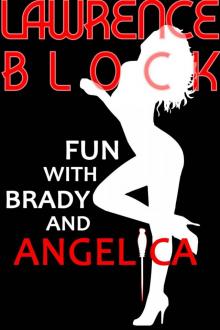 Fun with Brady and Angelica (Kit Tolliver #10 (The Kit Tolliver Stories)
Fun with Brady and Angelica (Kit Tolliver #10 (The Kit Tolliver Stories)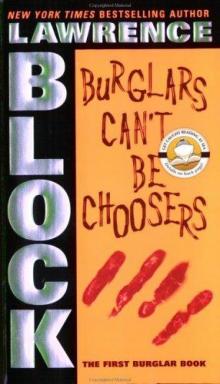 Burglars Can't Be Choosers
Burglars Can't Be Choosers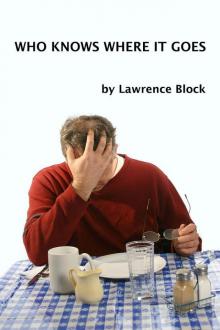 Who Knows Where It Goes (A Story From the Dark Side)
Who Knows Where It Goes (A Story From the Dark Side)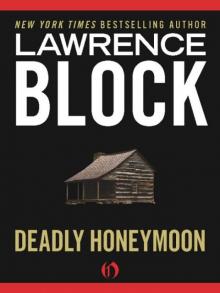 Deadly Honeymoon
Deadly Honeymoon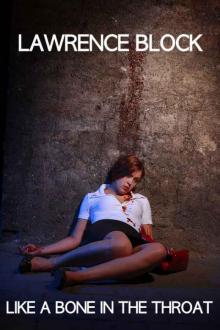 Like a Bone in the Throat (A Story From the Dark Side)
Like a Bone in the Throat (A Story From the Dark Side)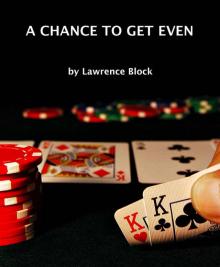 A Chance to Get Even (A Story From the Dark Side)
A Chance to Get Even (A Story From the Dark Side)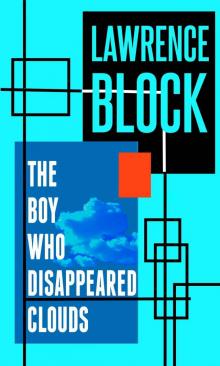 The Boy Who Disappeared Clouds
The Boy Who Disappeared Clouds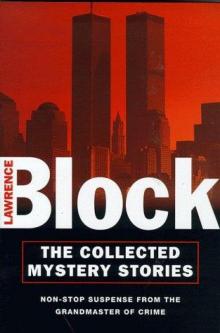 Collecting Ackermans
Collecting Ackermans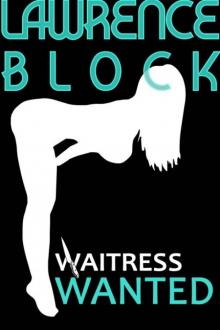 Waitress Wanted (Kit Tolliver #5) (The Kit Tolliver Stories)
Waitress Wanted (Kit Tolliver #5) (The Kit Tolliver Stories)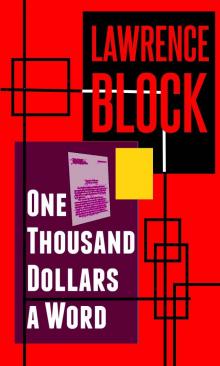 One Thousand Dollars a Word
One Thousand Dollars a Word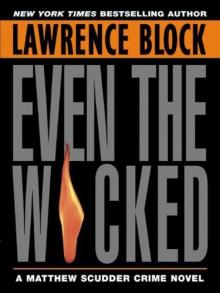 Even the Wicked: A Matthew Scudder Novel (Matthew Scudder Mysteries)
Even the Wicked: A Matthew Scudder Novel (Matthew Scudder Mysteries)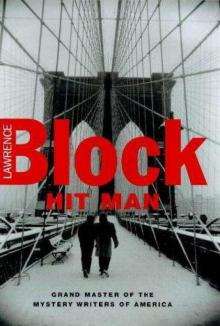 Hit Man
Hit Man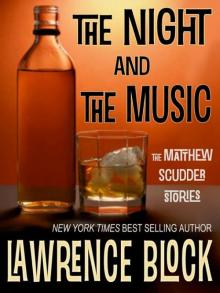 The Night and The Music
The Night and The Music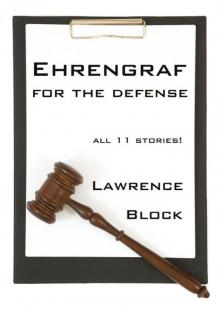 Ehrengraf for the Defense
Ehrengraf for the Defense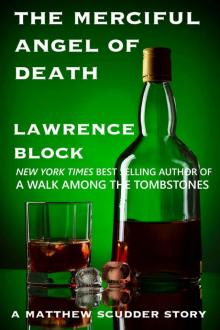 The Merciful Angel of Death (A Matthew Scudder Story Book 5)
The Merciful Angel of Death (A Matthew Scudder Story Book 5)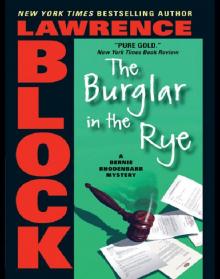 The Burglar in the Rye
The Burglar in the Rye I Know How to Pick 'Em
I Know How to Pick 'Em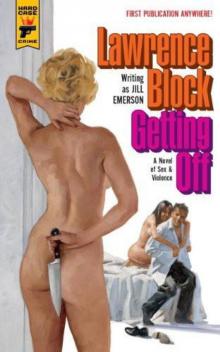 Getting Off hcc-69
Getting Off hcc-69 Three in the Side Pocket (A Story From the Dark Side)
Three in the Side Pocket (A Story From the Dark Side)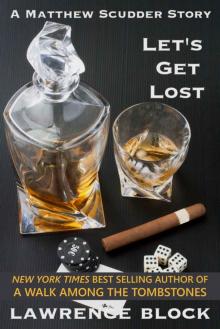 Let's Get Lost (A Matthew Scudder Story Book 8)
Let's Get Lost (A Matthew Scudder Story Book 8)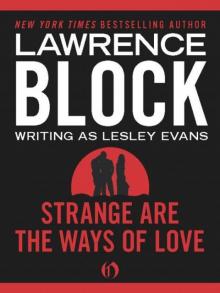 Strange Are the Ways of Love
Strange Are the Ways of Love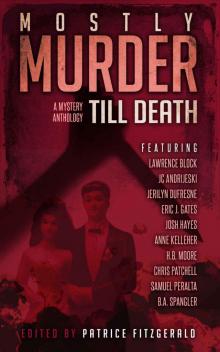 MOSTLY MURDER: Till Death: a mystery anthology
MOSTLY MURDER: Till Death: a mystery anthology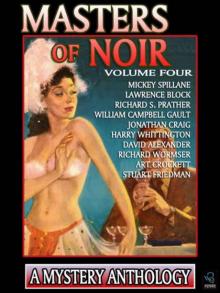 Masters of Noir: Volume Four
Masters of Noir: Volume Four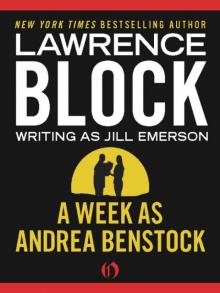 A Week as Andrea Benstock
A Week as Andrea Benstock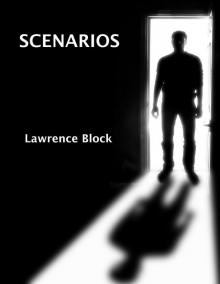 Scenarios (A Stoiry From the Dark Side)
Scenarios (A Stoiry From the Dark Side)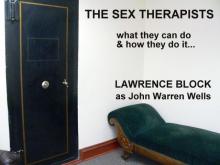 The Sex Therapists: What They Can Do and How They Do It (John Warren Wells on Sexual Behavior Book 15)
The Sex Therapists: What They Can Do and How They Do It (John Warren Wells on Sexual Behavior Book 15)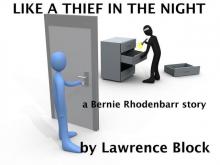 Like a Thief in the Night: a Bernie Rhodenbarr story
Like a Thief in the Night: a Bernie Rhodenbarr story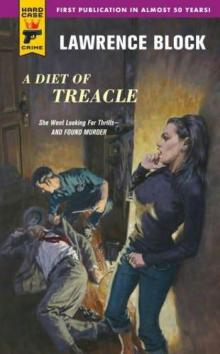 A Diet of Treacle
A Diet of Treacle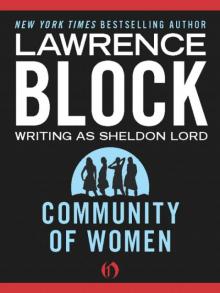 Community of Women
Community of Women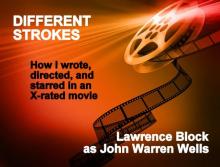 Different Strokes: How I (Gulp!) Wrote, Directed, and Starred in an X-rated Movie (John Warren Wells on Sexual Behavior)
Different Strokes: How I (Gulp!) Wrote, Directed, and Starred in an X-rated Movie (John Warren Wells on Sexual Behavior)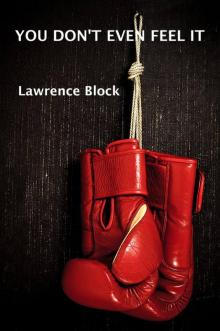 You Don't Even Feel It (A Story From the Dark Side)
You Don't Even Feel It (A Story From the Dark Side)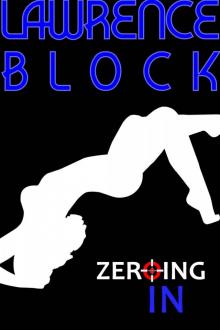 Zeroing In (Kit Tolliver #11) (The Kit Tolliver Stories)
Zeroing In (Kit Tolliver #11) (The Kit Tolliver Stories)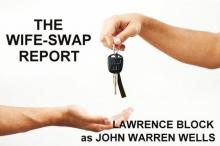 The Wife-Swap Report (John Warren Wells on Sexual Behavior)
The Wife-Swap Report (John Warren Wells on Sexual Behavior)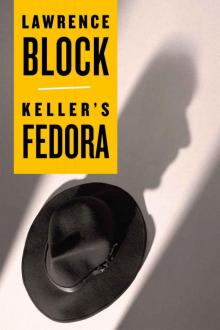 Keller's Fedora (Kindle Single)
Keller's Fedora (Kindle Single) Speaking of Lust
Speaking of Lust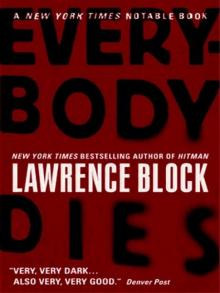 Everybody Dies (Matthew Scudder)
Everybody Dies (Matthew Scudder)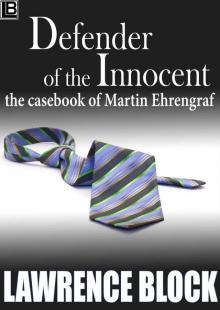 Defender of the Innocent: The Casebook of Martin Ehrengraf
Defender of the Innocent: The Casebook of Martin Ehrengraf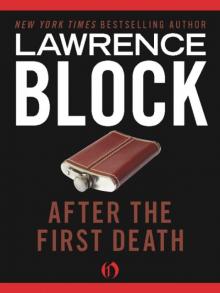 After the First Death
After the First Death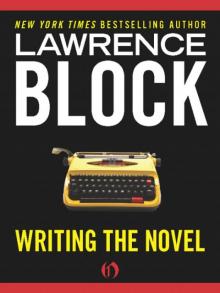 Writing the Novel
Writing the Novel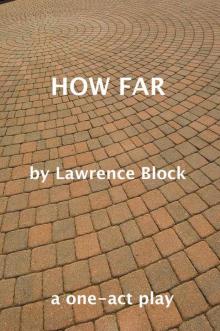 How Far - a one-act stage play
How Far - a one-act stage play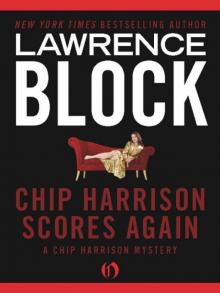 Chip Harrison Scores Again
Chip Harrison Scores Again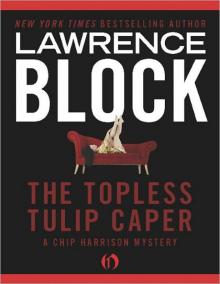 The Topless Tulip Caper ch-4
The Topless Tulip Caper ch-4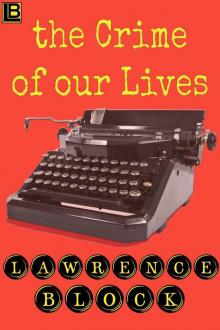 The Crime of Our Lives
The Crime of Our Lives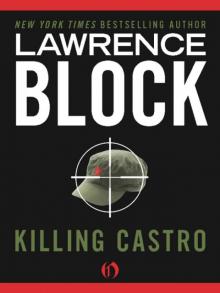 Killing Castro
Killing Castro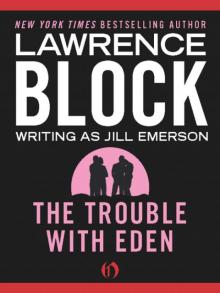 The Trouble with Eden
The Trouble with Eden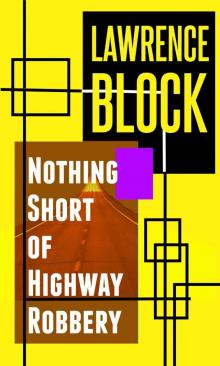 Nothing Short of Highway Robbery
Nothing Short of Highway Robbery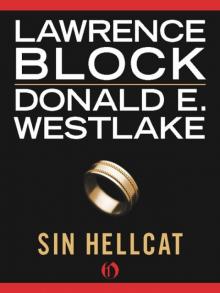 Sin Hellcat
Sin Hellcat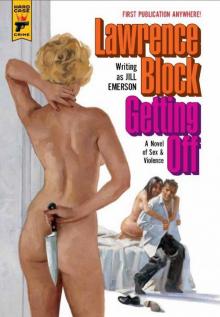 Getting Off: A Novel of Sex & Violence (Hard Case Crime)
Getting Off: A Novel of Sex & Violence (Hard Case Crime)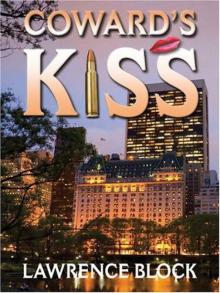 Coward's Kiss
Coward's Kiss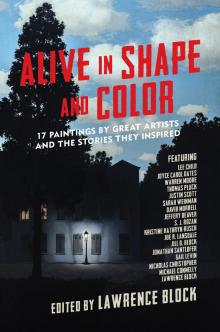 Alive in Shape and Color
Alive in Shape and Color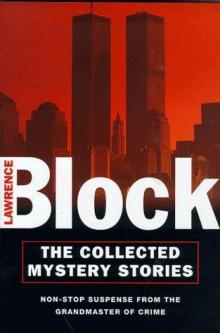 Blow for Freedom
Blow for Freedom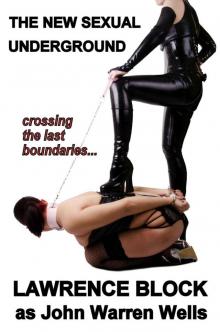 The New Sexual Underground: Crossing the Last Boundaries (John Warren Wells on Sexual Behavior Book 10)
The New Sexual Underground: Crossing the Last Boundaries (John Warren Wells on Sexual Behavior Book 10)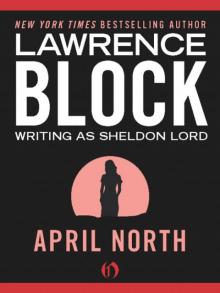 April North
April North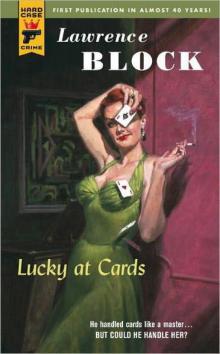 Lucky at Cards
Lucky at Cards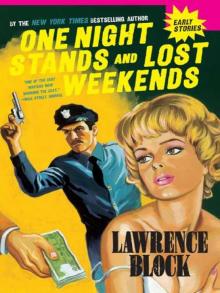 One Night Stands; Lost weekends
One Night Stands; Lost weekends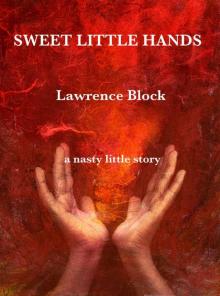 Sweet Little Hands (A Story From the Dark Side)
Sweet Little Hands (A Story From the Dark Side)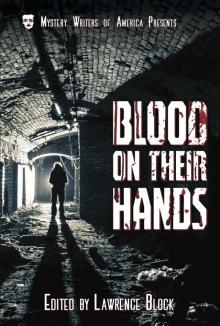 Blood on Their Hands
Blood on Their Hands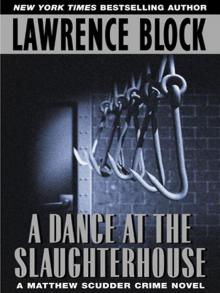 A Dance at the Slaughterhouse
A Dance at the Slaughterhouse Headaches and Bad Dreams (A Story From the Dark Side)
Headaches and Bad Dreams (A Story From the Dark Side)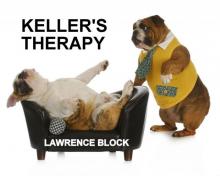 Keller's Therapy
Keller's Therapy The Specialists
The Specialists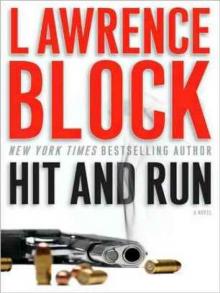 Hit and Run jk-4
Hit and Run jk-4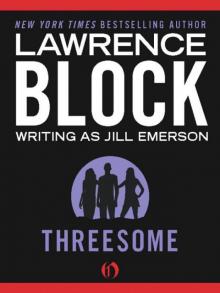 Threesome
Threesome Love at a Tender Age (John Warren Wells on Sexual Behavior)
Love at a Tender Age (John Warren Wells on Sexual Behavior)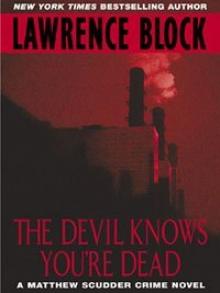 The Devil Knows You're Dead: A MATTHEW SCUDDER CRIME NOVEL
The Devil Knows You're Dead: A MATTHEW SCUDDER CRIME NOVEL Funny You Should Ask
Funny You Should Ask CH01 - No Score
CH01 - No Score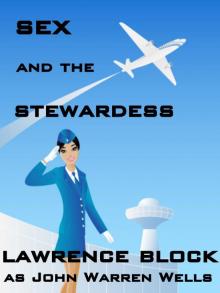 Sex and the Stewardess (John Warren Wells on Sexual Behavior)
Sex and the Stewardess (John Warren Wells on Sexual Behavior)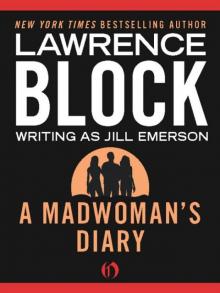 A Madwoman's Diary
A Madwoman's Diary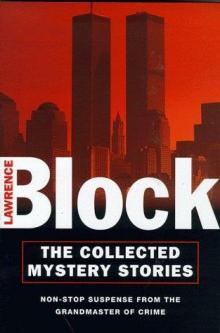 When This Man Dies
When This Man Dies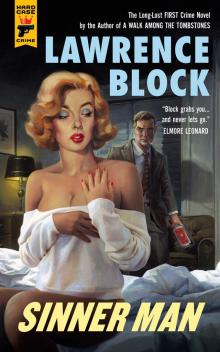 Sinner Man
Sinner Man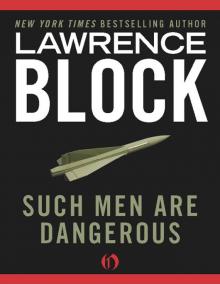 Such Men Are Dangerous
Such Men Are Dangerous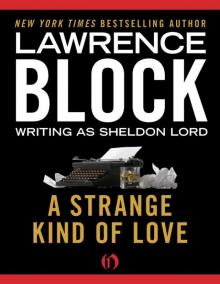 A Strange Kind of Love
A Strange Kind of Love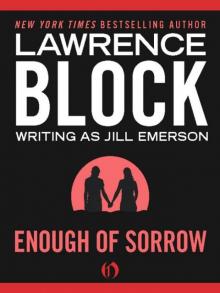 Enough of Sorrow
Enough of Sorrow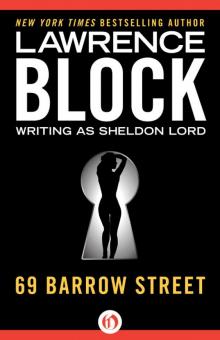 69 Barrow Street
69 Barrow Street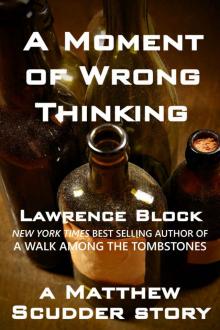 A Moment of Wrong Thinking (Matthew Scudder Mysteries Series Book 9)
A Moment of Wrong Thinking (Matthew Scudder Mysteries Series Book 9)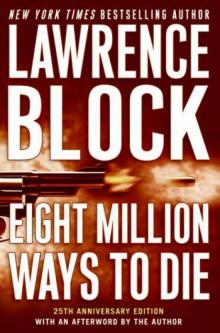 Eight Million Ways to Die ms-5
Eight Million Ways to Die ms-5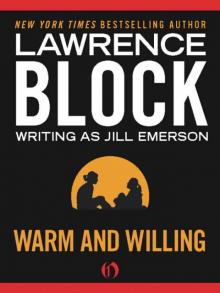 Warm and Willing
Warm and Willing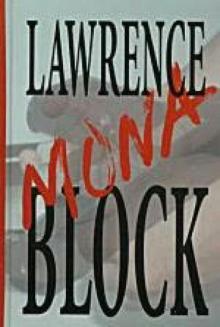 Mona
Mona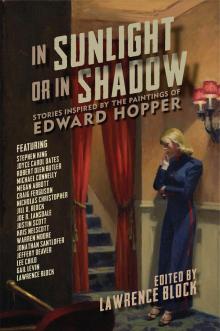 In Sunlight or In Shadow
In Sunlight or In Shadow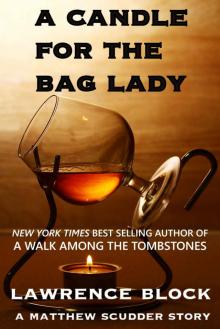 A Candle for the Bag Lady (Matthew Scudder Book 2)
A Candle for the Bag Lady (Matthew Scudder Book 2)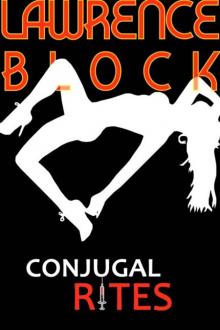 Conjugal Rites (Kit Tolliver #7) (The Kit Tolliver Stories)
Conjugal Rites (Kit Tolliver #7) (The Kit Tolliver Stories) Speaking of Lust - the novella
Speaking of Lust - the novella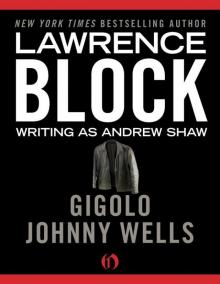 Gigolo Johnny Wells
Gigolo Johnny Wells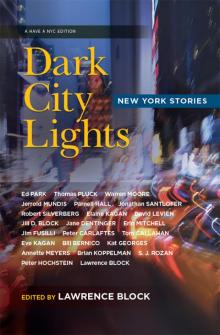 Dark City Lights
Dark City Lights Versatile Ladies: the bisexual option (John Warren Wells on Sexual Behavior)
Versatile Ladies: the bisexual option (John Warren Wells on Sexual Behavior)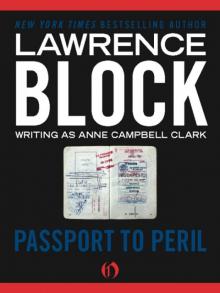 Passport to Peril
Passport to Peril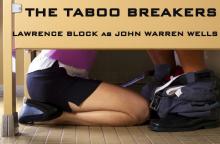 The Taboo Breakers: Shock Troops of the Sexual Revolution (John Warren Wells on Sexual Behavior)
The Taboo Breakers: Shock Troops of the Sexual Revolution (John Warren Wells on Sexual Behavior)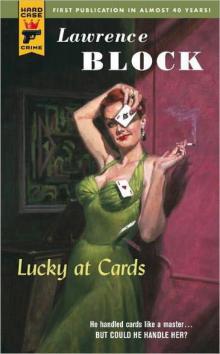 Lucky at Cards hcc-28
Lucky at Cards hcc-28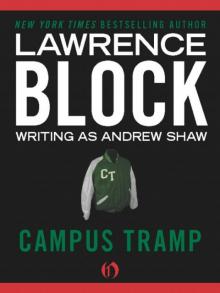 Campus Tramp
Campus Tramp 3 is Not a Crowd (John Warren Wells on Sexual Behavior)
3 is Not a Crowd (John Warren Wells on Sexual Behavior)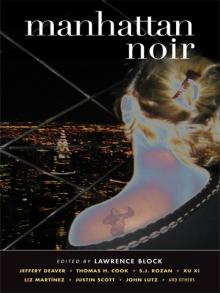 Manhattan Noir
Manhattan Noir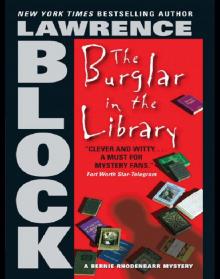 The Burglar in the Library
The Burglar in the Library Doing It! - Going Beyond the Sexual Revolution (John Warren Wells on Sexual Behavior Book 13)
Doing It! - Going Beyond the Sexual Revolution (John Warren Wells on Sexual Behavior Book 13)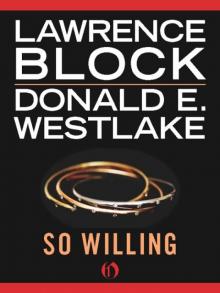 So Willing
So Willing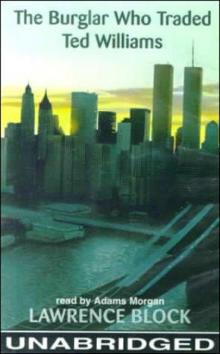 The Burglar Who Traded Ted Williams br-6
The Burglar Who Traded Ted Williams br-6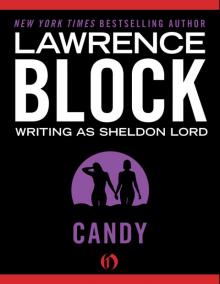 Candy
Candy Sex Without Strings: A Handbook for Consenting Adults (John Warren Wells on Sexual Behavior)
Sex Without Strings: A Handbook for Consenting Adults (John Warren Wells on Sexual Behavior)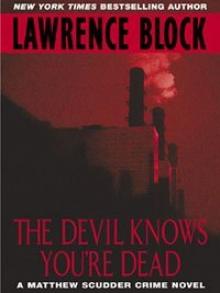 The Devil Knows You're Dead: A MATTHEW SCUDDER CRIME NOVEL (Matthew Scudder Mysteries)
The Devil Knows You're Dead: A MATTHEW SCUDDER CRIME NOVEL (Matthew Scudder Mysteries)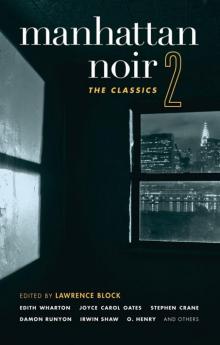 Manhattan Noir 2
Manhattan Noir 2 The Scoreless Thai (aka Two For Tanner)
The Scoreless Thai (aka Two For Tanner)